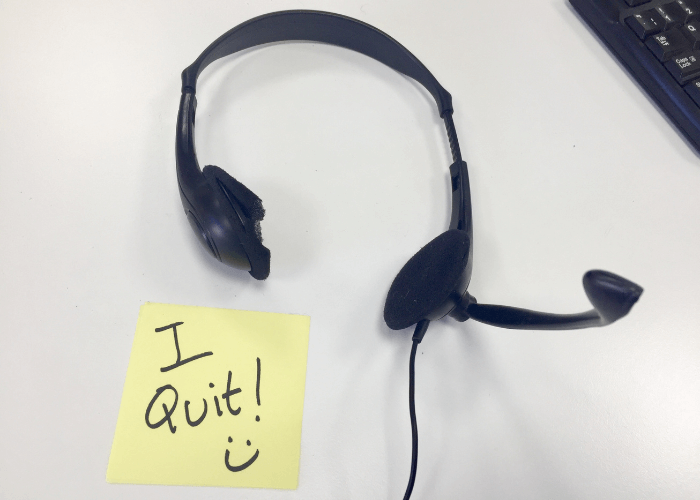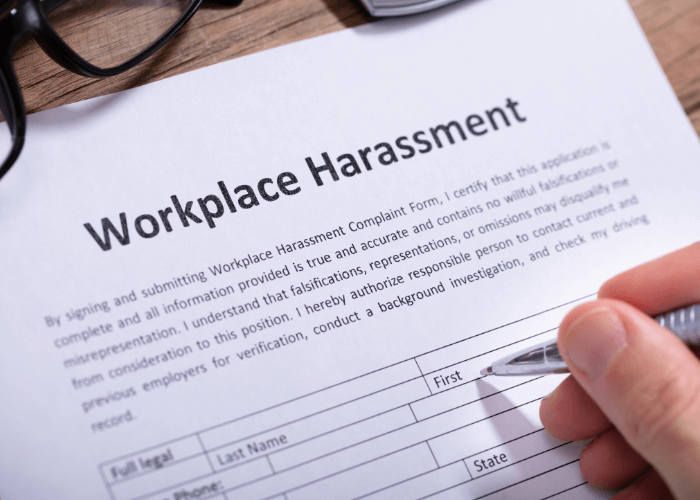Symptoms of Burnout at Work
Have you been dragging your feet lethargically on your way to the office lately? Are you struggling to summon the once-abundant motivation and energy that once drove you through your workday? If that sounds relatable, you might be approaching the risky specter of burnout.
Burnout is a condition that undermines a person’s emotional, cognitive, and even physical capabilities. It is often triggered by prolonged and extreme work-related stress in combination with some personal predispositions and risk factors.
The paragraphs below will shed some light on the symptoms, causes, and stages of job burnout, along with some hands-on strategies for preventing and managing the condition.
What Is Job Burnout: Definition and Types
The state of burnout is marked by an all-pervading feeling of emotional, mental, and physical exhaustion. It can arise when you constantly push yourself beyond your limits to fulfill your professional duties, ultimately leading to an unavoidable collapse.
It is crucial to differentiate burnout from other associated conditions, such as stress and depression. Stress is a natural reaction to the numerous challenges and pressures we encounter. It can often be managed by employing effective coping mechanisms. Depression, conversely, is a severe mental health disorder that requires timely and personalized professional attention.
Burnout, though, is a complex and multifaceted state with a specific modus operandi for prevention and management.
There are different types of job burnout, the most common among which include:
- Frenetic burnout occurs when individuals work excessively and compulsively, attempting to prove their worth through high productivity levels.
- Underchallenged burnout happens when individuals feel bored, unstimulated, and unappreciated in their job.
- Worn-out burnout is when people feel exhausted and disillusioned, often due to chronic stress, job insecurity, or lack of support.
No matter the type of burnout, recognizing the reasons behind it will always be the first step toward making things right for yourself again.
Common Causes of Burnout Among Employees
Burnout can be provoked by a combination of work-related and personal factors.
Work-related contributing factors contributing can include:
- Unrealistic job demands, increased workloads, and arm-twisting deadlines;
- Lack of control over the nature and the quantity of your assignments;
- Inadequate levels of social support from colleagues, supervisors, and the community.

Some personal factors, on the other hand, might be:
- Personality traits such as perfectionism, high-performing anxiety, and neuroticism;
- Unhealthy coping mechanisms – avoidance, alcohol, or substance abuse;
- Significant life events, including divorce, financial stress, or health-related problems.
Research suggests that there is also a lengthy checklist of risk factors defining how predisposed you are to burnout. According to a recent study from Future Forum, women and workers under 30 are most prone to it, with nearly half (48%) of 18-to-29-year-olds feeling chronically exhausted at work.
At the same time, 46% of women reported higher levels of burnout compared to men, who count up to 37%.
What Are The Early Symptoms Of Burnout at Work?
Burnout can manifest in different physical, emotional, behavioral, and social symptoms.
Physical Symptoms of Burnout
These include:
- Feeling tired and drained most of the time, even after resting;
- Frequent headaches, migraines, or tension headaches;
- Difficulty falling or staying asleep or waking up feeling tired;
- Upset stomach, diarrhea, or constipation;
- Lack of concentration and focus, etc.
Emotional Symptoms of Burnout
Emotional signs of burnout can include:
- A negative and cynical outlook on work and life;
- Lack of motivation and interest in work tasks or projects;
- Feeling unfulfilled or dissatisfied with your work;
- Feeling emotionally drained, depleted, or overwhelmed;
- Feeling irritable or impatient;
- Loss of enjoyment in activities previously found pleasurable, etc.

Behavioral Symptoms of Burnout
In this group, you can look out for:
- Difficulty completing work tasks decreased productivity or low quality of work;
- Absenteeism and tardiness;
- Procrastination and avoidance of tasks;
- Neglecting self-care and personal needs;
- Engaging in risky or impulsive behaviors;
- Isolation and withdrawal from social interactions, etc.
Social Symptoms of Burnout
Last but not least, burnout is a probable reason for the following changes in social behavior:
- Conflict with colleagues or supervisors;
- Having difficulty with teamwork and collaboration;
- Becoming more critical of others;
- Neglecting personal relationships;
- Poor work-life balance;
- Losing interest in personal hobbies or activities;
- Feeling uncomfortable in social situations, etc.
How Do You Diagnose Work-related Burnout?
Diagnosing burnout can be tricky. The reason is that the symptoms are often comparable to those of other conditions, including depression and anxiety.
However, there are several established ways to confirm a work-related form of burnout, the first among which is self-assessment. You can use validated assessment tools such as the Maslach Burnout Inventory (MBI) or Copenhagen Burnout Inventory (CBI) to evaluate your symptoms and determine your burnout level.
A healthcare professional can also check your physical health to rule out any underlying medical conditions. Sleep disturbances, poor diet choices, and hormonal disturbances are the usual suspects when it comes to chronic exhaustion.
Mental health professionals, on the other hand, are there to inspect your psychological condition. They can confirm or eliminate the hypothesis of job-related burnout, as well as identify any other mental health conditions causing the distress.
Last but not least, reviewing all work-related factors is a crucial step to take. For example, analyzing workload, job demands, and employment conditions can help identify the root causes of burnout and design your long-term prevention plan.

Strategies For Preventing and Managing Burnout
Preventing burnout requires a combination of individual and organizational strategies.
As an individual, there are a few stepping stones to consider on your path to healing:
- Establish boundaries between work and personal life to foster a healthy work-life proportion.
- Plan self-care activities such as exercise, meditation, or hobbies to promote your physical and mental well-being.
- Work on developing healthy coping mechanisms such as problem-solving or seeking social support.
Organizations, on the other hand, are also required to take the matter seriously and implement measures to reduce burnout levels among employees.
If you are an employer yourself, here is what you can do to make things better for your crew:
- Encourage workplace social activities and provide opportunities for employees to connect with each other.
- Provide resources, such as employee assistance programs or mental health services, to sustain employee well-being.
- Avoid excessive workloads and deliver adequate resources to complete tasks.
At the end of the day, transparency is crucial for a healthy workplace environment. Promote honest discussions about workplace anxiety, job-related burnout, workplace bullying, and whatever challenges your team might be facing. Happy employees are productive employees, and an employer who cares is an employer who profits.
When To Seek Professional Treatment For Work-related Burnout
You don’t need to experience habitual burnout that manifests in physical symptoms before seeking support from a healthcare professional. In fact, it’s precisely the opposite.
Remember that reacting as early as possible is essential to prevent early-stage burnout from evolving into hard-to-manage enmeshment.
Once you have the first step, treatment strategies will differ depending on the severity of your symptoms. They usually include counseling, medication, or a combination of both. However, when you have a trusted professional to guide your way, you can rest assured that it will all work out in the end.
Burnout is both a preventable and a treatable issue. The only thing you need to do is keep an eye on yourself and react timely to preserve your mental well-being regardless of how demanding your job is.














